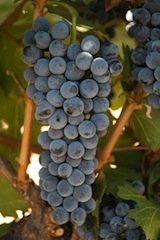2012 crop is biggest and among the best.
The 2012 tonnage was up more than 30 percent from the previous year’s crop and was nearly 18 percent higher than the 2010 crush, considered more reflective of Washington’s wine grape production. The 2011 crop was down significantly (142,000 tons) due to vines that were damaged during a freeze occurring during Thanksgiving in 2010.
For the first time in Washington’s wine grape history, more red grapes were crushed than white (94,500 tons compared to 93,500) and the state’s top four varieties of Chardonnay, Riesling, Cabernet Sauvignon, and Merlot were nearly even in production, with less than 2,500 tons separation among the four. Of the four varieties, Merlot posted the biggest production gains, increasing 58 percent from the previous year.
Merlot vines generally can carry bigger crop loads than Cabernet Sauvignon and the grapes are versatile, being used in varietal wines as well as red blends.
Industry officials expected a big crop in 2012. The Washington Association of Wine Grape Growers estimated the crop in July to be 197,000 tons, based on estimated yields from growers and wineries and estimated crush numbers from wineries. The Washington Wine Commission used 190,000 tons to guide its promotion and marketing budget for the year.
Data collection
The USDA collects information from wineries based on tonnage of grapes utilized (sales), not total crush numbers. In the last year, winery data generated by the USDA report was also used by the Washington Wine Commission to collect its winery assessments. It is also noted that the USDA report does not include tonnage of estate vineyard production.
Wade Wolfe, owner and winemaker of Thurston Wolfe Winery in Prosser, told the Good Fruit Grower that the big crop reflected new acreage coming into production and vines recovering from the 2010 freeze. Wolfe will be giving a detailed review of the 2012 crop year on February 6 during the annual convention of the Grape Growers Association. Many winemakers have reported that the 2012 vintage was exceptional and should produce great wines.
Wolfe was surprised at the crop estimate discrepancies between the Grape Grower Association’s unofficial number and USDA’s, noting that the numbers are usually fairly close.
He says that the majority of last year’s statewide crop was picked, with only small amounts of unharvested grapes left on the vine. “All of the red grapes, even Syrah, got sucked up by wineries for blending,” Wolfe said.
Tonnage may have been down in some Syrah and Merlot blocks that were badly damaged in 2010 but were not retrained, he said. “Some of those vines that didn’t get retrained were really struggling last year. They were likely underperformers that produced much less than expected.”


Leave A Comment